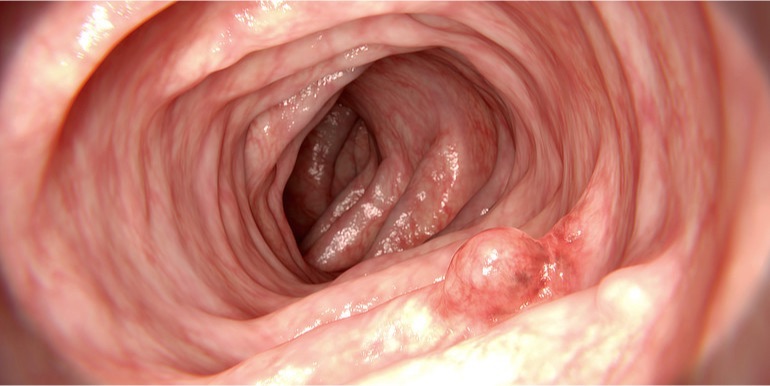The IARC perspective on colorectal cancer screening
Colorectal cancer is the third most common cancer in men and the second most common in women and represents almost 10% of the annual global cancer incidence. Yet the disease is preventable with a healthy lifestyle and efficient screening. The International Agency for Research on Cancer (IARC) Handbooks of Cancer Prevention programme has evaluated the effectiveness of various colorectal cancer screening methods.
Image credit: depositphotos.com
Contents
- 1 Introduction
- 2 Stool-based tests
- 3 Endoscopic methods
- 4 Computed tomographic (CT) colonography
- 5 Comparative effectiveness of colorectal cancer screening techniques
- 6 Reference
Introduction

An international group of 23 experts convened by IARC performed a systematic review and evaluation of the pertinent scientific literature on stool-based tests, endoscopic methods, and computed tomographic colonography methods. Based on these studies, the experts evaluated the strength of the evidence for the preventive effects, the adverse effects, and the ratio of benefits to harms. A summary of the outcome of the meeting is published today as a Special Report in the New England Journal of Medicine [1].
“The evaluation of the effectiveness of the currently available screening tests for colorectal cancer is a key first step towards the implementation of effective screening programmes and the reduction of the colorectal cancer burden,” says Dr Béatrice Lauby-Secretan, the head of the Handbooks programme.
Stool-based tests
Stool-based tests detect occult blood in stool. Stool-based tests include the guaiac-based faecal occult blood test (gFOBT), with or without rehydration, and the more recent and more sensitive faecal immunochemical test (FIT). Screening with stool-based tests is generally done either every year or every 2 years.
Beneficial effects of gFOBT
There is sufficient evidence that screening every 1 or 2 years with gFOBT (either with or without rehydration), when the test is coupled with follow-up colonoscopy for those testing positive, reduces colorectal cancer mortality. The reduction in the risk of dying from colorectal cancer, as reported in the randomized trials conducted in North America and western Europe in populations aged 45–80 years, ranges from 9% to 14% for gFOBT without rehydration (low sensitivity) and from 16% to 32% for gFOBT with rehydration (higher sensitivity), compared with no screening. Regarding reduction in incidence of colorectal cancer, the evidence for gFOBT with rehydration (higher sensitivity) is limited.
Beneficial effects of FIT
Results from several large cohort studies conducted in settings where screening has been implemented were highly consistent in showing the effectiveness of screening with FIT. Overall, there is sufficient evidence that screening every 2 years with FIT, when the test is coupled with follow-up colonoscopy for those testing positive, reduces colorectal cancer mortality. The reduction in the risk of dying from colorectal cancer is 10% to 40%.
Benefit–harm ratio for stool-based occult blood tests
Harms related to stool-based tests are limited to the psychological harms of screening in general, and the potential harms of follow-up colonoscopy.
The experts concluded that there is sufficient evidence that for colorectal cancer screening with any type of stool-based blood test, the benefits outweigh the harms.
Endoscopic methods
Endoscopic methods, which use optical approaches to directly examine the colon and rectum, include sigmoidoscopy and colonoscopy.
Colonoscopy is used both as a primary screening tool and as follow-up for individuals testing positive with other screening methods.
Beneficial effects of endoscopy
There is sufficient evidence that a single screening with sigmoidoscopy or with colonoscopy reduces both the incidence of and the mortality from colorectal cancer. For sigmoidoscopy, the reduction in incidence observed in randomized trials is about 20–25%, and the reduction in mortality is up to 30%. For colorectal cancer screening with colonoscopy, the large observational studies reported risk reductions both in incidence and in mortality of almost 70%.
Benefit–harm ratio for endoscopy
Endoscopic methods can induce treatment-related harms, such as bleeding and perforation, although such harms are uncommon. Similar psychological harms to those observed with stool-based tests can occur.
Overall, there is sufficient evidence that the benefits outweigh the harms both for sigmoidoscopy and for colonoscopy.
Computed tomographic (CT) colonography
CT colonography, an imaging method based on scanning technology, has been developed as a less invasive visualization technique for colorectal cancer screening.
Beneficial effects of CT colonography
There is limited evidence that a single screening with CT colonography reduces colorectal cancer incidence and/or mortality.
Benefit–harm ratio for CT colonography
Harms associated with CT colonography include radiation-induced effects, the downstream effects from detection of extracolonic findings, and the potential harms of follow-up colonoscopy. In addition, similar psychological harms to those observed with stool-based tests can occur.
Due to a paucity of data, to date there is inadequate evidence that the benefits of a single round of screening with CT colonography outweigh the harms.
Comparative effectiveness of colorectal cancer screening techniques
A number of studies compared the reduction in colorectal cancer incidence and mortality with stool-based tests versus endoscopic methods. However, the evidence was inconclusive.
“Given that this cancer is so common and its incidence is increasing in many parts of the world, the findings point clearly to the benefits of screening,” says IARC Director Dr Christopher Wild. “However, a major challenge in many countries is to ensure a greater participation in national screening programmes, in order to reduce the risk of developing and dying from colorectal cancer.”
Reference
- Lauby-Secretan B, Vilahur N, Bianchini F, Guha N, Straif K; International Agency for Research on Cancer Handbook Working Group. The IARC Perspective on Colorectal Cancer Screening. The New England Journal of Medicine 2018; 378(18): 1734–1740. doi: 10.1056/NEJMsr1714643
klíčová slova: colorectal cancer screening, endoscopy, colonoscopy, sigmoidoscopy, guaiac faecal occult blood test (gFOBT), faecal immunochemical test (FIT), CT colonography, virtual colonoscopy, evidence, effectiveness


